Meet the next bunch of couture house contenders

The Institut Français de la Mode’s fashion design students went up against the biggest players of couture week, following a graduate show staged earlier this month. Meet some of the designers who are inevitably headed toward a couture house.
Style
Words: Eni Subair
Earlier this month, the autumn/winter 2025 couture shows in Paris presented a bonjour and an au revoir: Glenn Martens presented his debut Maison Margiela show while Demna bid farewell to Balenciaga . Meanwhile, as the old guard revolved, the Class of ’25 at the Institut Français de la Mode (IFM) were busy demonstrating craftsmanship that may well define the future of couture in Paris.
Of course, asking fashion students – 30 of them – to rival the buzz of couture week is no small feat. Yet the BA Fashion Design cohort, comprising designers from around the world, rose to the occasion. And, to be fair, they had history on their side: IFM’s sister college, École de la Chambre Syndicale de la Couture Parisienne, has produced talents such as Yves Saint Laurent, Karl Lagerfeld, and Issey Miyake. Excellence, clearly, is embedded in the walls of the campus.
Here, five of IFM’s fashion design students share their next-level collections, demonstrating how Disney stars can be fashion muses, grandmas are OG style icons and why even dishtowels can be couture.
Tidjane Tall
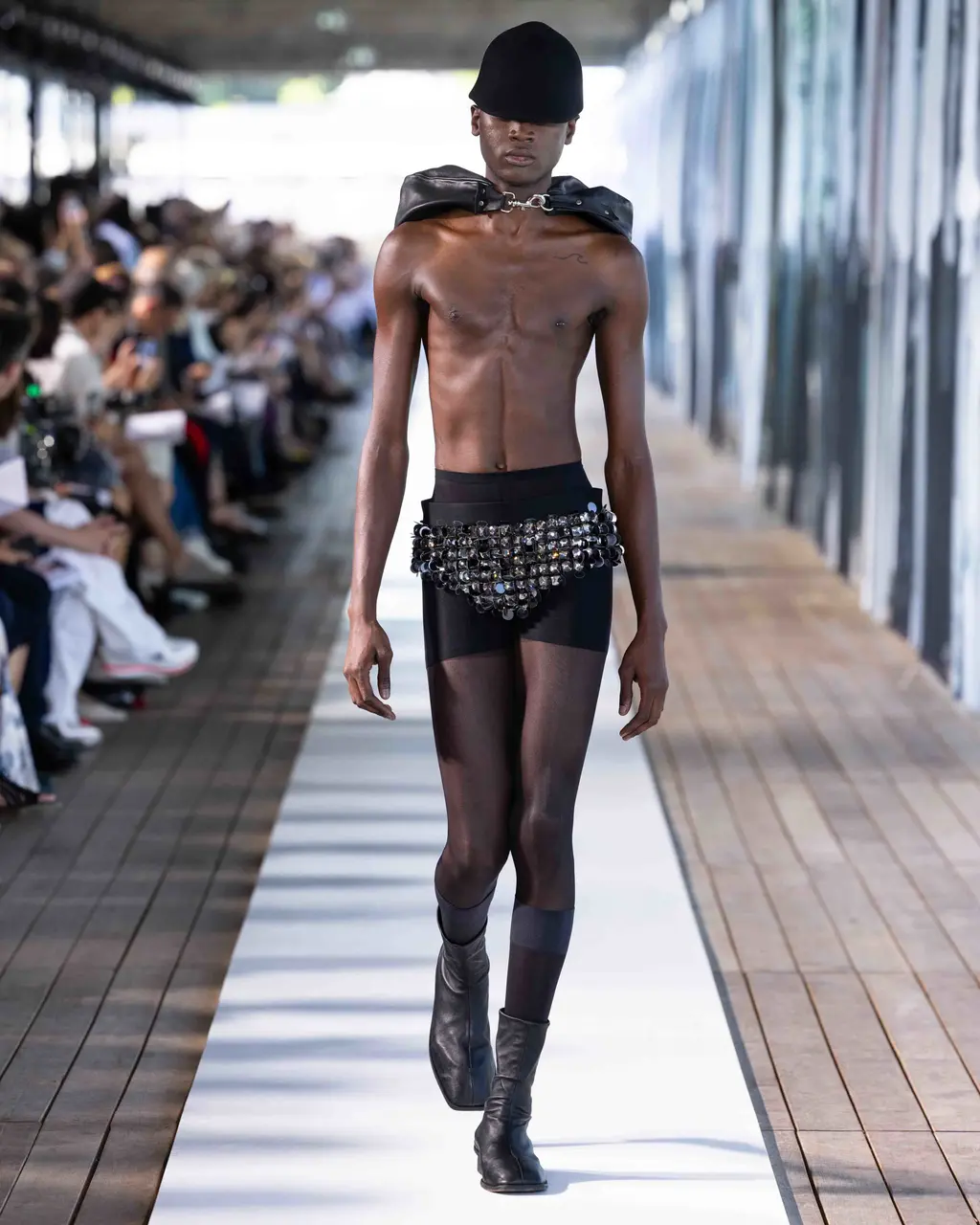
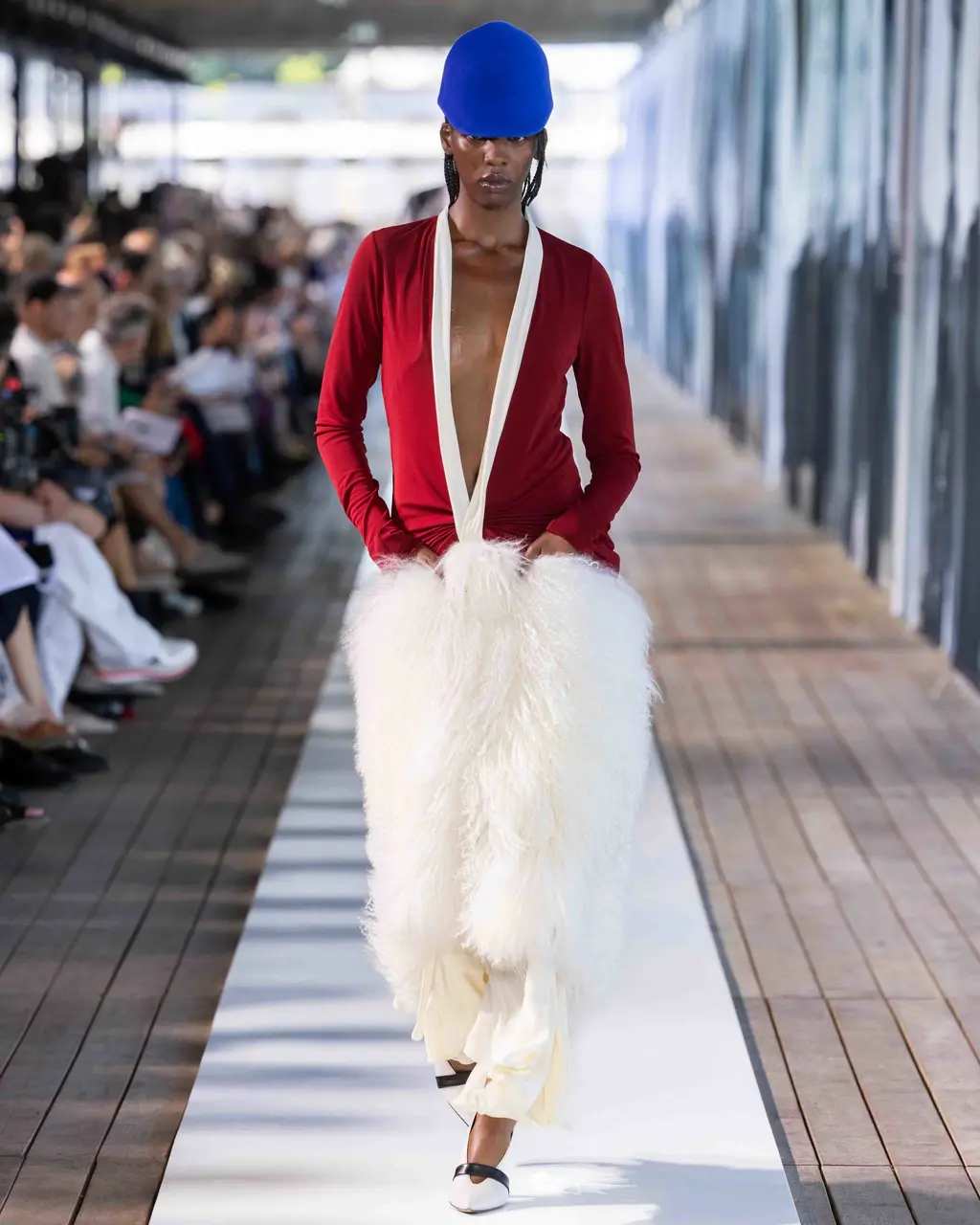
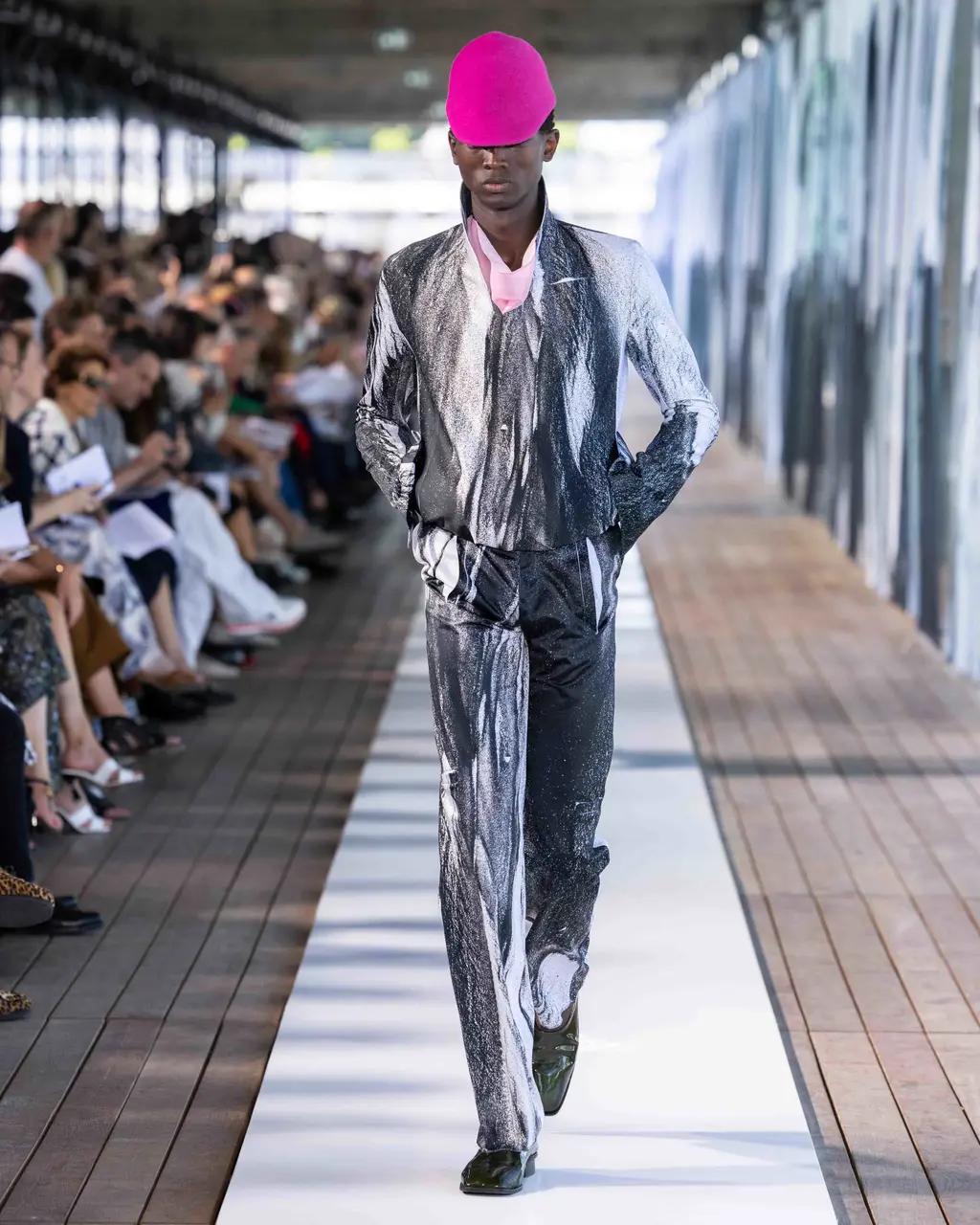
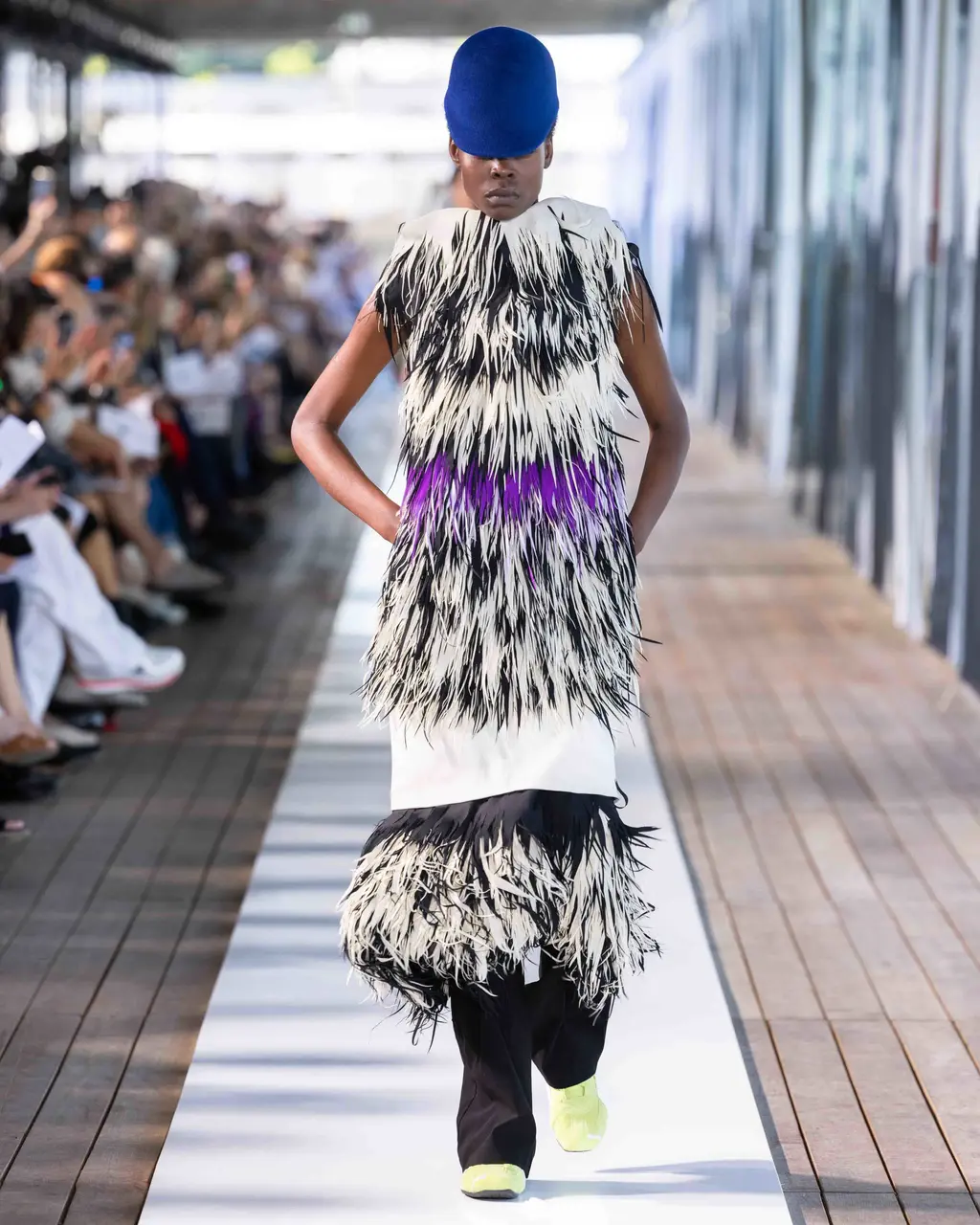
You opened this year’s Institut Français de la Mode graduate show. How did that feel?
To be honest, I didn’t expect to open the show. When we got the running order, I was quite surprised, and felt a lot of pressure at the same time! And then came the excitement, because I always joked with my friend about having a look with just briefs – and it was a full circle moment because [a look with crystal briefs] was my opening look for my graduate show.
Tell me about the concept behind these fabulous briefs.
It’s a homage to François Benga, who was a queer Senegalese dancer in the 1920s – he danced with Josephine Baker. I discovered his story in my first year. I somehow felt connected to this story and I was amazed by the elegance of his pictures, [and] wearing only black briefs with small embroidery.
Dogukan Nesanir, who’s worked with Miley Cyrus and Troye Sivan, styled the collection. How did you meet?
I reached out to Dogukan via Instagram DM quite late in my design process because I didn’t know if it was a meaningful enough graduate collection. But I knew I wanted insight from people in the [fashion] industry. He was surprised that I asked for his point of view, but we met in Paris and [then] talked remotely. He gave me advice on how to keep [my designs] elevated, and he helped me with the final touches before the show to make it even more interesting.
What was on your mood board?
I chose family heritage as a starting point. La Boyle Noire, a cabaret created by my grandfather, Baïdy Tall, during the ’70s in Ivory Coast. It no longer exists, and I never got the chance to see it or visit. I had work from [Kenyan-British ceramicist] Magdalene Odundo next to a Balenciaga Haute Couture gown, and next to that a Donna Karan coat. There was also a Nigerian women’s wig next to Chanel archive palm-leaf details, along with archive stills from Awa, the first West African fashion magazine. A lot of pictures showcasing blackness and Black joy, essentially.
Candice Morin
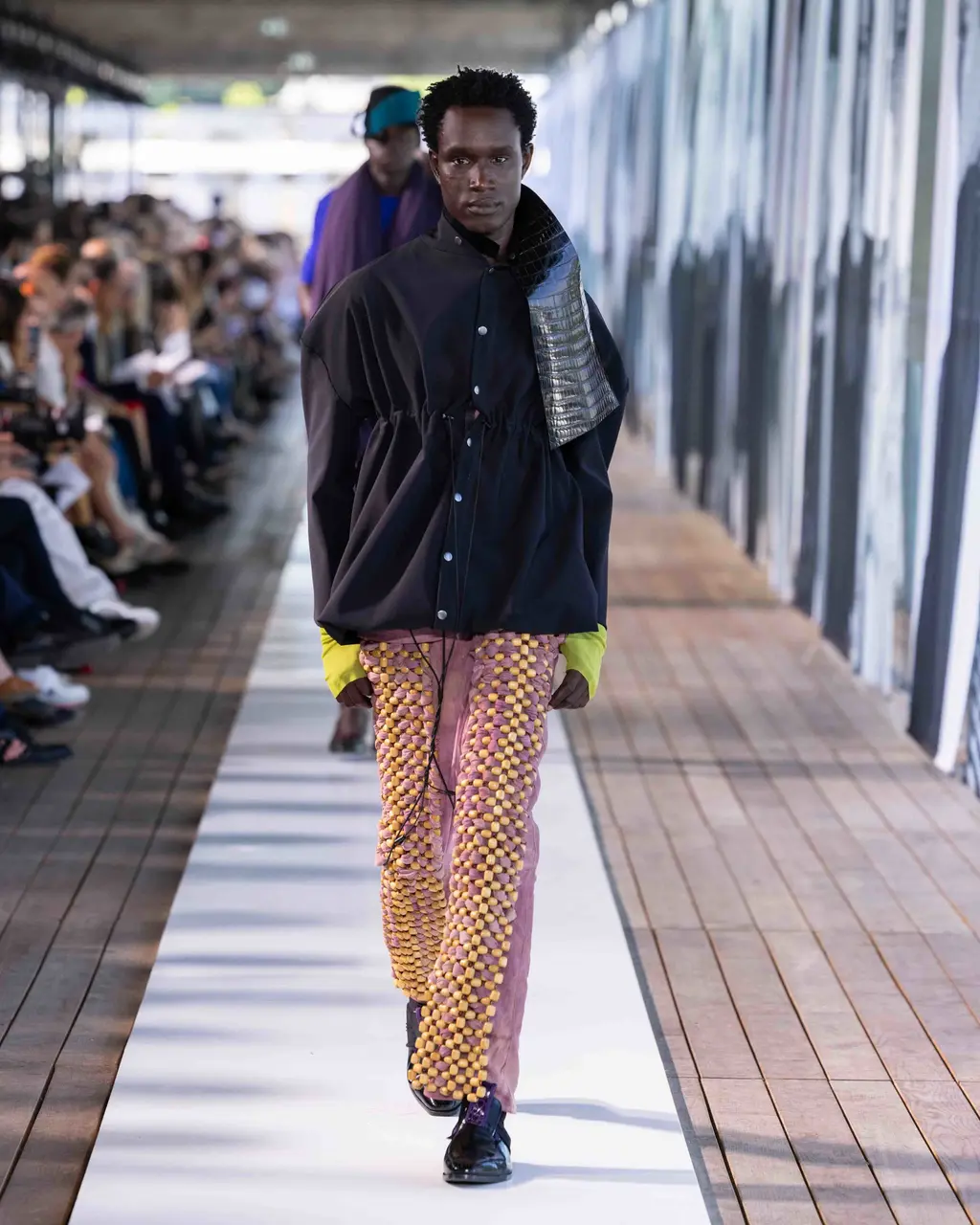
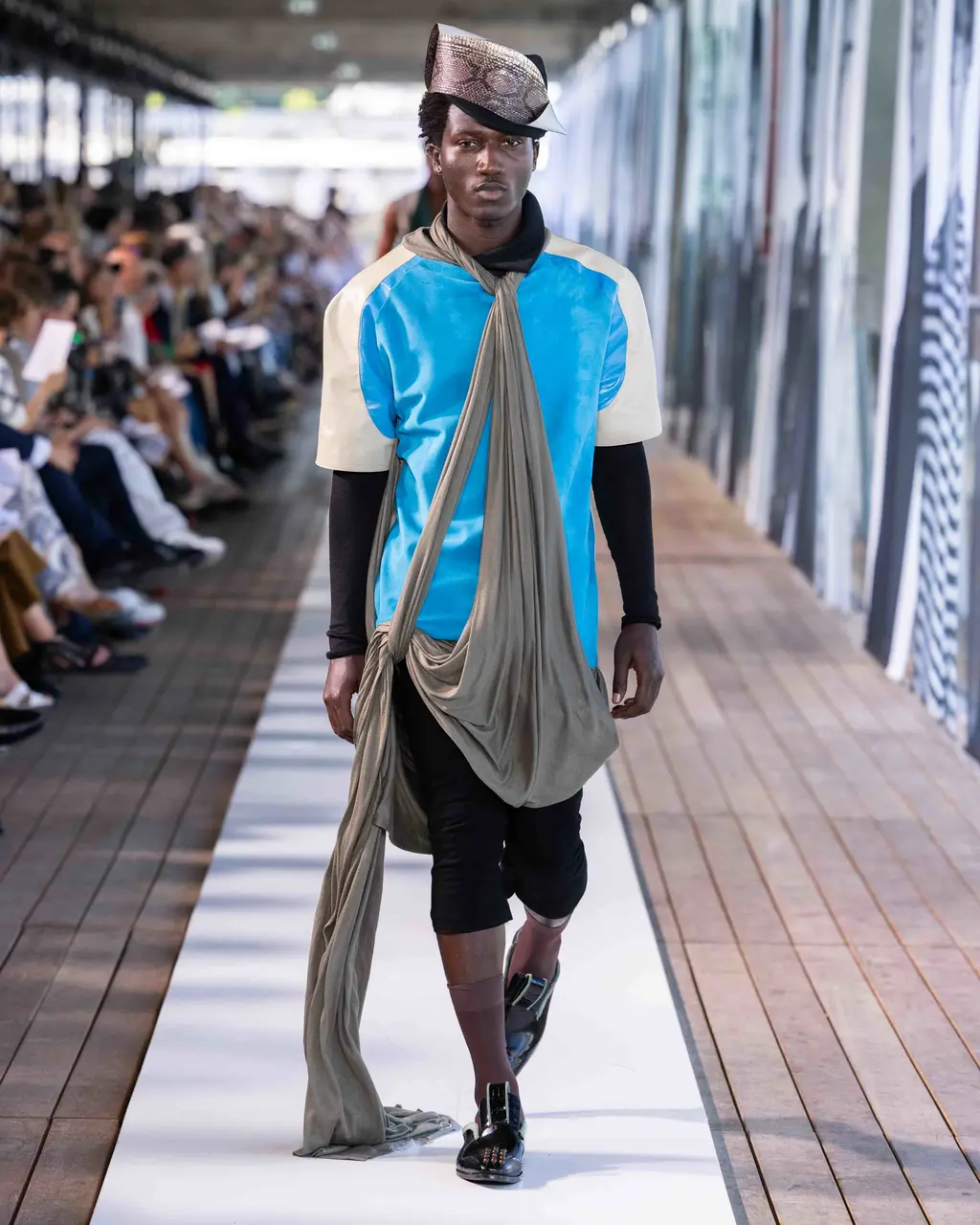
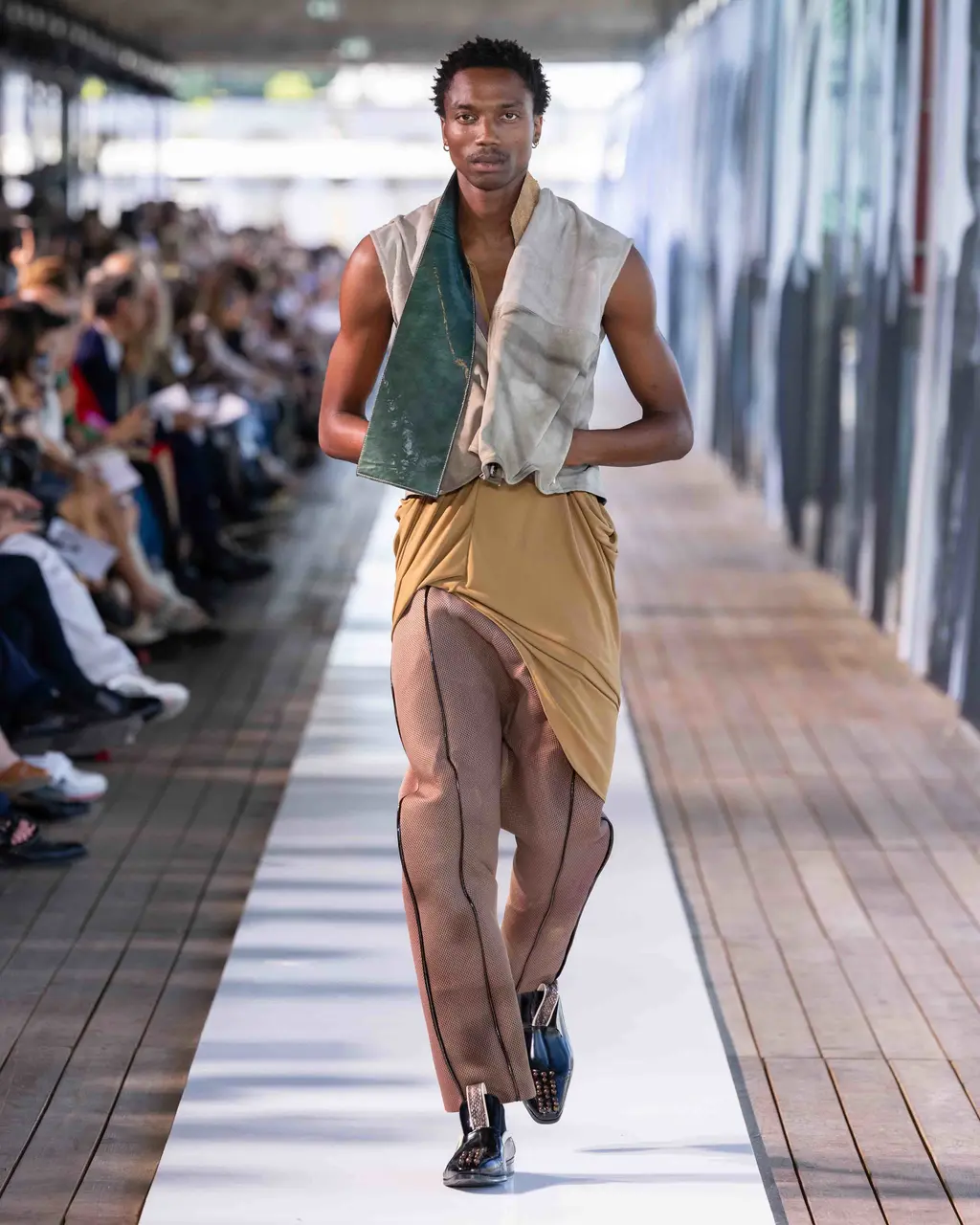
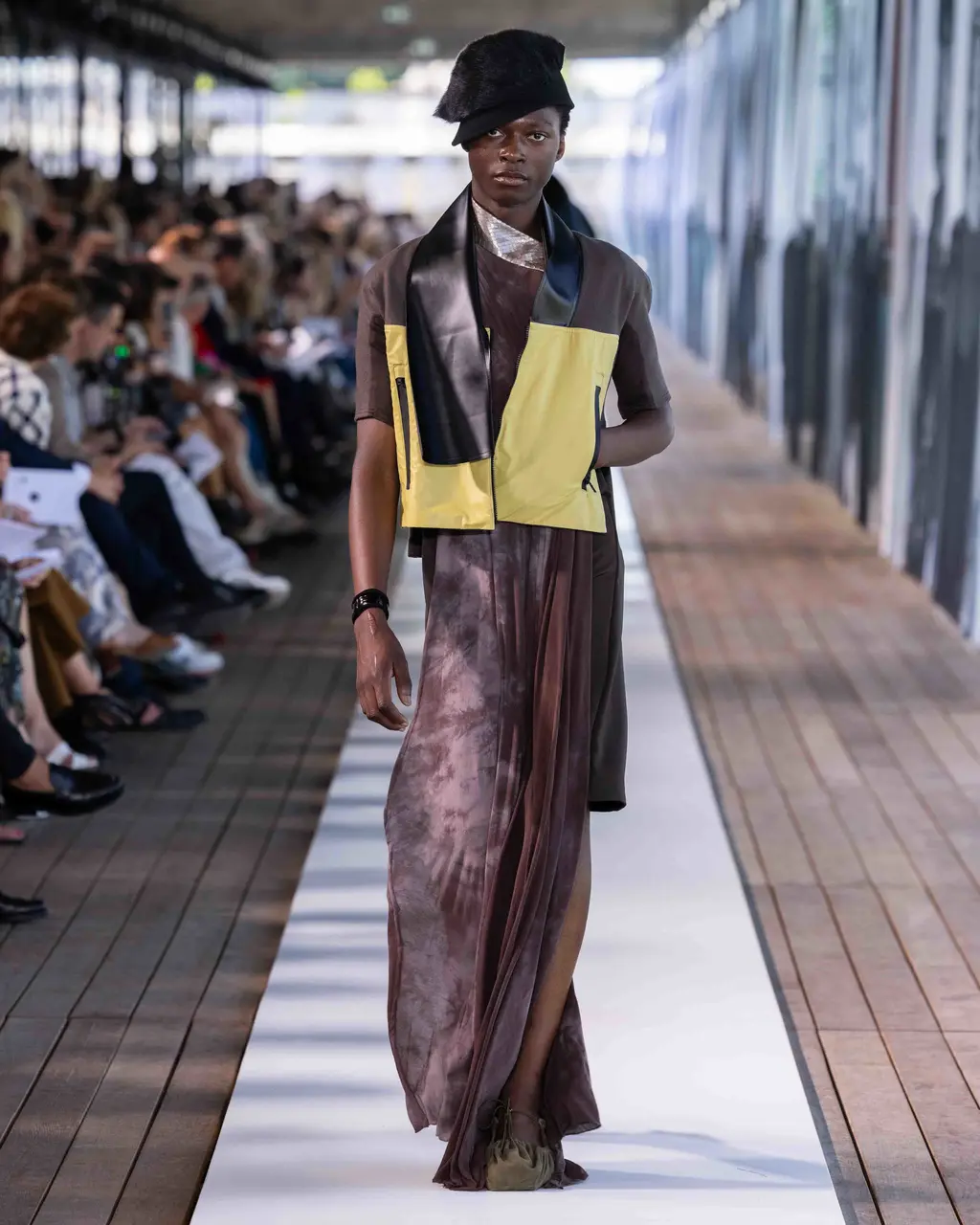
What was the inspiration behind your menswear collection?
My family roots – exploring the tension between strong masculinity and maternal heritage, blending structure and softness. Through textured fabrics, organic draping and layering, the collection embodies a deep introspection between protection and intimacy.
Your sixth look uses beaded leather scraps. How did you come up with the concept?
It started off as a sustainable project we had to create at the beginning of the year. I got some wooden pearl car seat covers and I decided to keep developing it, exploring different weaving and construction techniques. The first mockups were made in jersey. But I felt the fabric didn’t hold up visually next to the impact of the wooden beads. I wanted a material that could match their presence and contrast with their texture.
With look four, how did you have the idea to work in draping with leather T‑shirts?
During a fitting for a friend, I spontaneously tucked my skirt into my T‑shirt and noticed how beautiful the movement looked. I decided to recreate that gesture more intentionally by integrating the drape directly on the T‑shirt. To highlight the contrasts, I played with both materials and colours using soft, natural tones like beige and khaki, and disrupting them with a bold, frontal pop of blue.
What song best sums up the collection?
Walking Wounded by Everything But The Girl. There’s something about the contrast between the soft, almost fragile, voice and the sharpness of the electronic production that really resonates with the spirit of the collection.
Amandine Leost
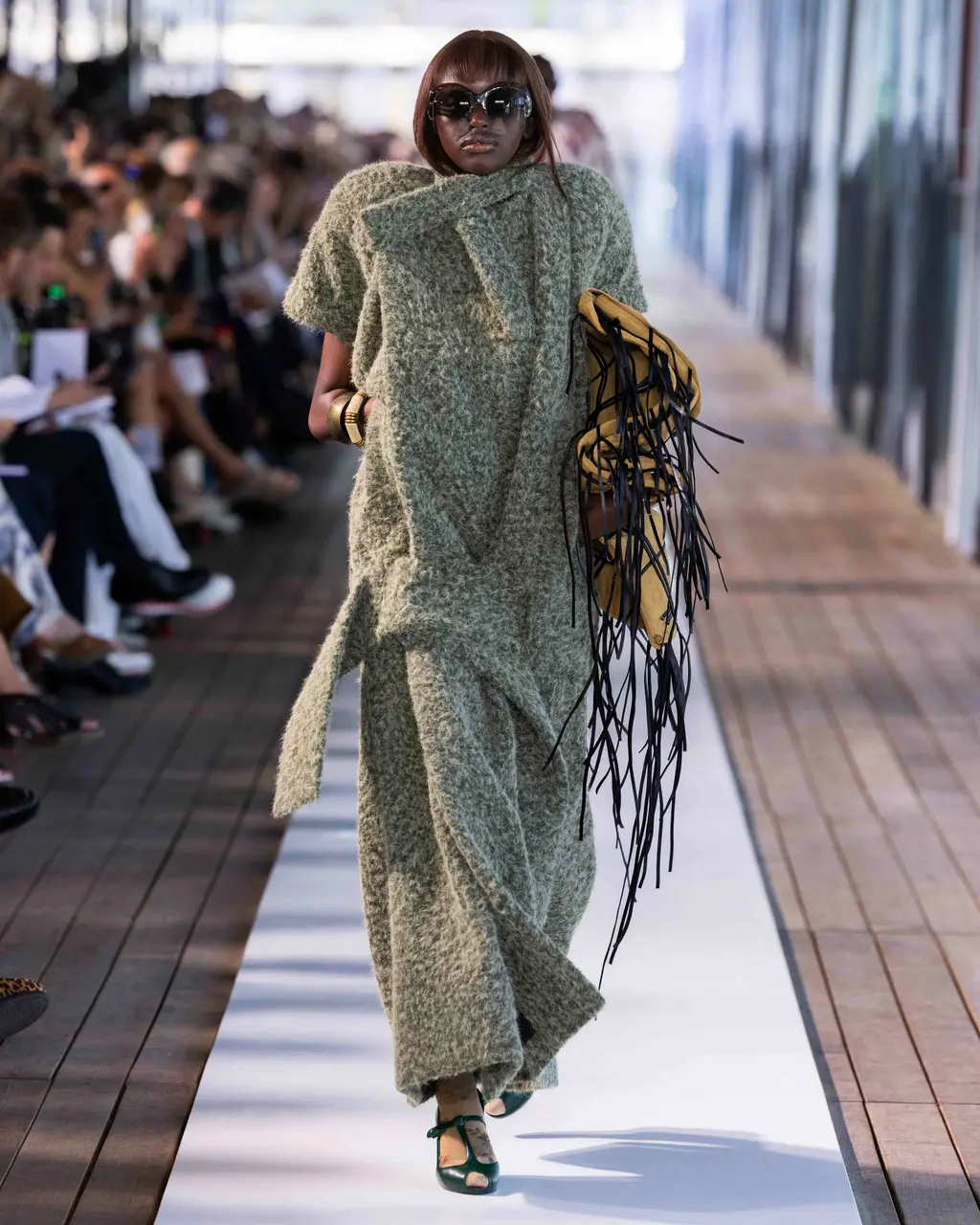
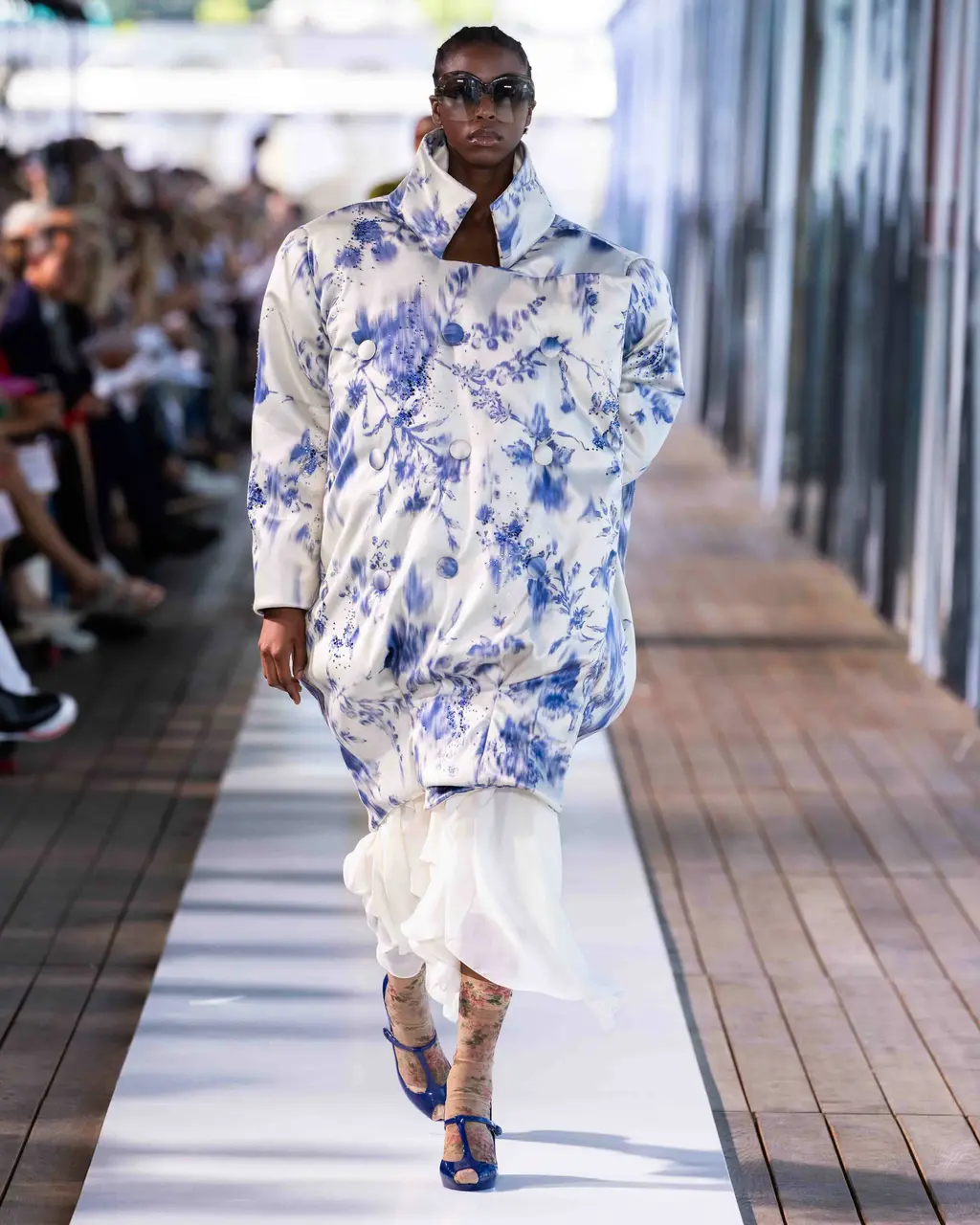
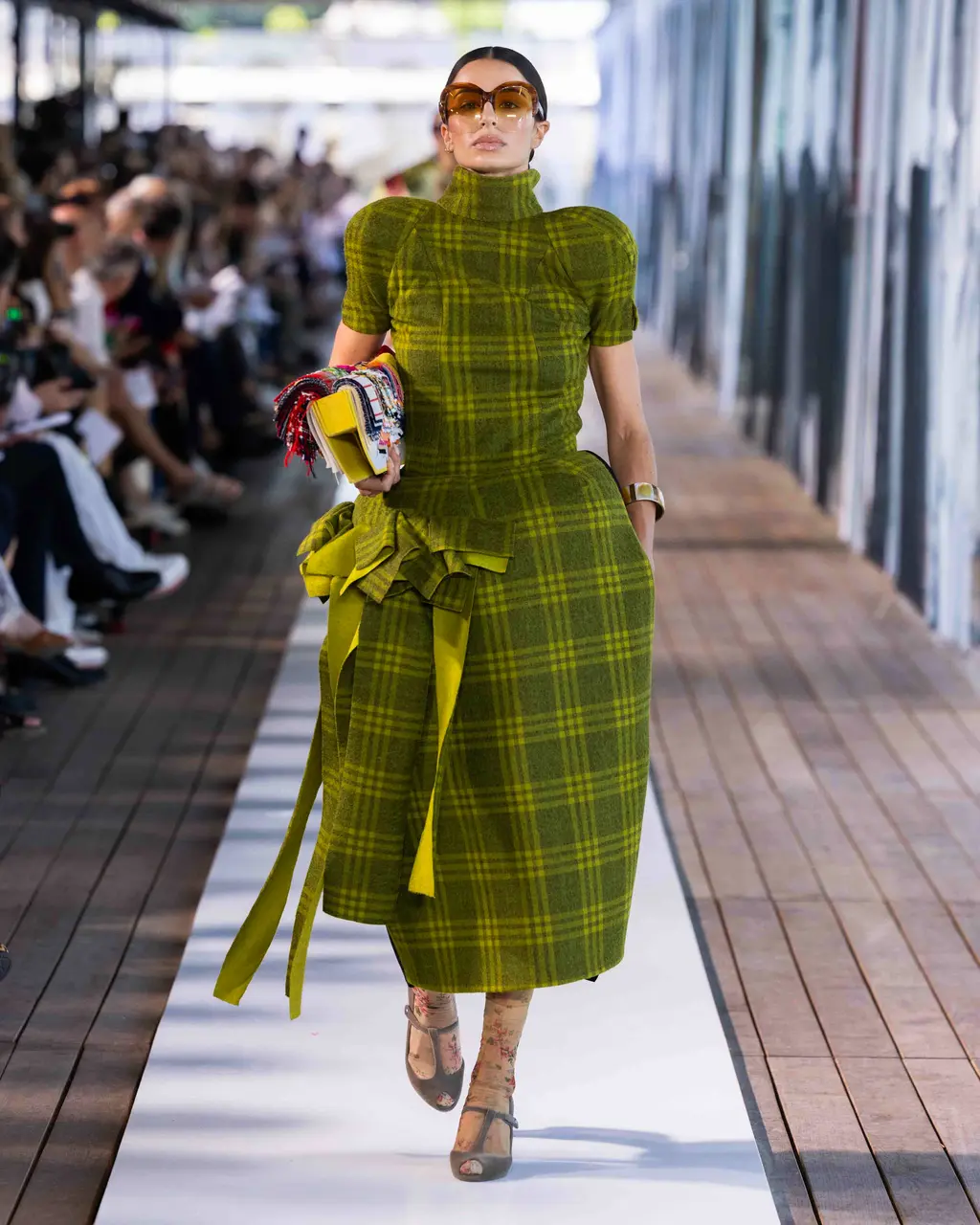
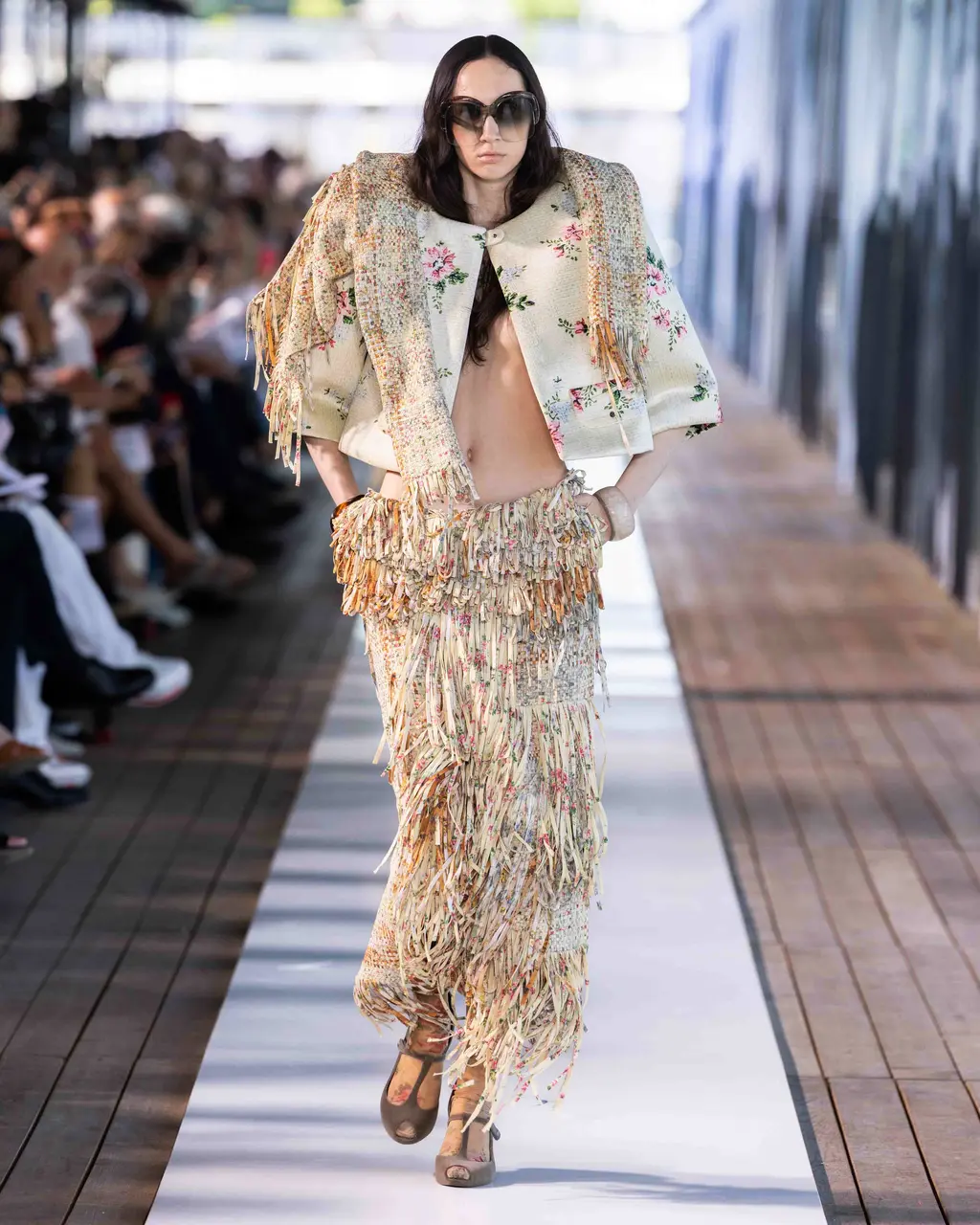
Which look were you most excited to send down the runway?
The first look was the one. It perfectly captures the essence of the collection – the volumes, textures and references. I love the energy it gives off and the attitude it brings the moment it steps onto the runway. It was important to me that the show opened with a strong design.
Do you have a muse?
I’d say my muse is the tender yet eccentric image of grandmothers from the ’60s to ’80s, in a kitschy domestic setting from a time I never lived but deeply imagined.
How does furniture, fraying and fringing play into your work?
Furniture appears as a reference to flea markets and vintage interiors, especially through tapestry-inspired prints. There’s a sense of stillness and warmth, like in a grandmother’s living room. Some silhouettes even weave in padded seating from the ’70s through their exaggerated shapes. Fraying plays a more symbolic role – I left certain edges raw, expressing the passage of time and the fading of memories, a nod to those grandmothers clinging to a kind of outdated elegance that remains deeply touching. Look three, for example, is inspired by classic kitchen dishtowels – old and worn to the point of being full of holes.
What was the first fashion show you fell in love with?
The 2015 Chanel Métiers d’art show, Paris in Rome.
Antoine Lledo
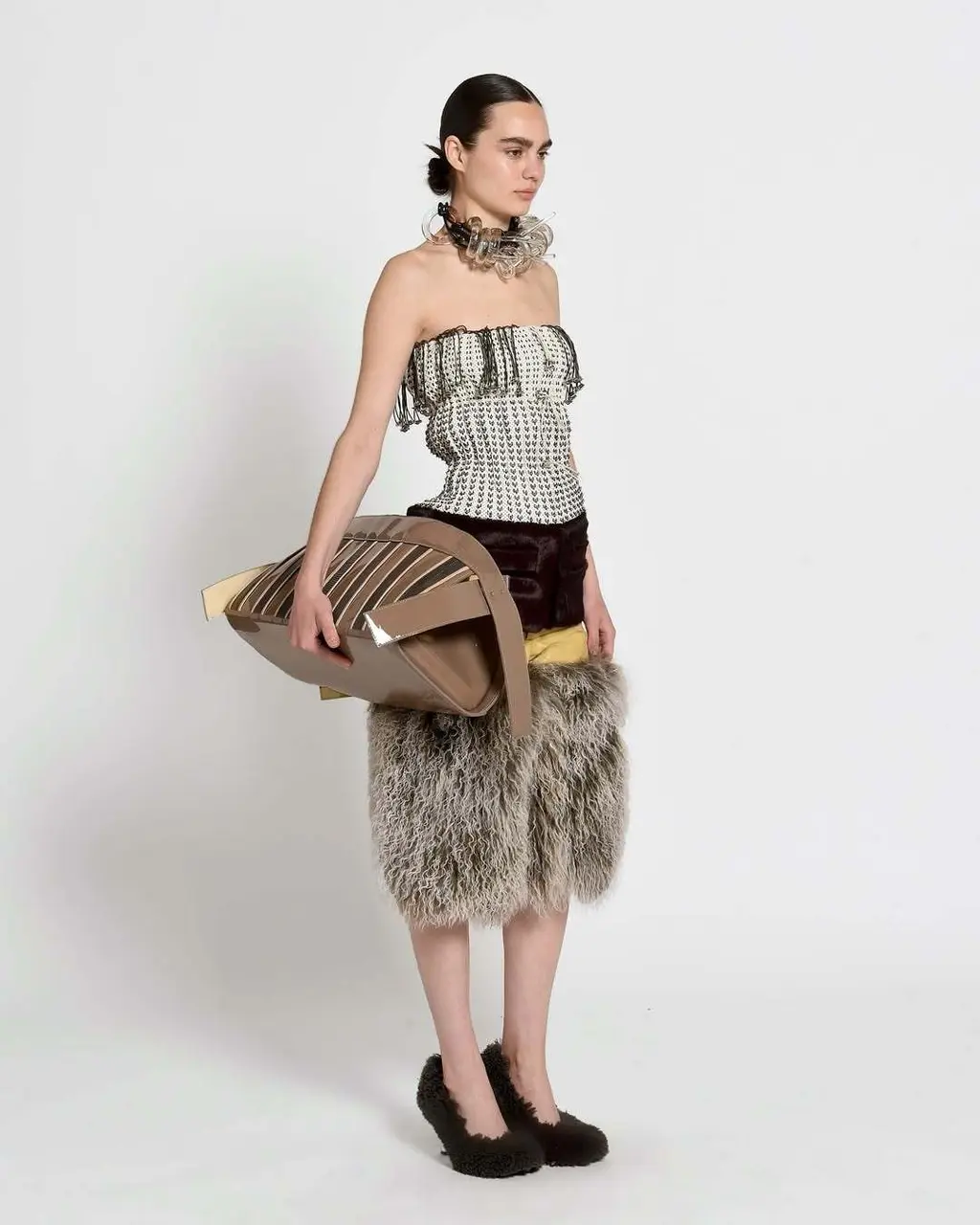
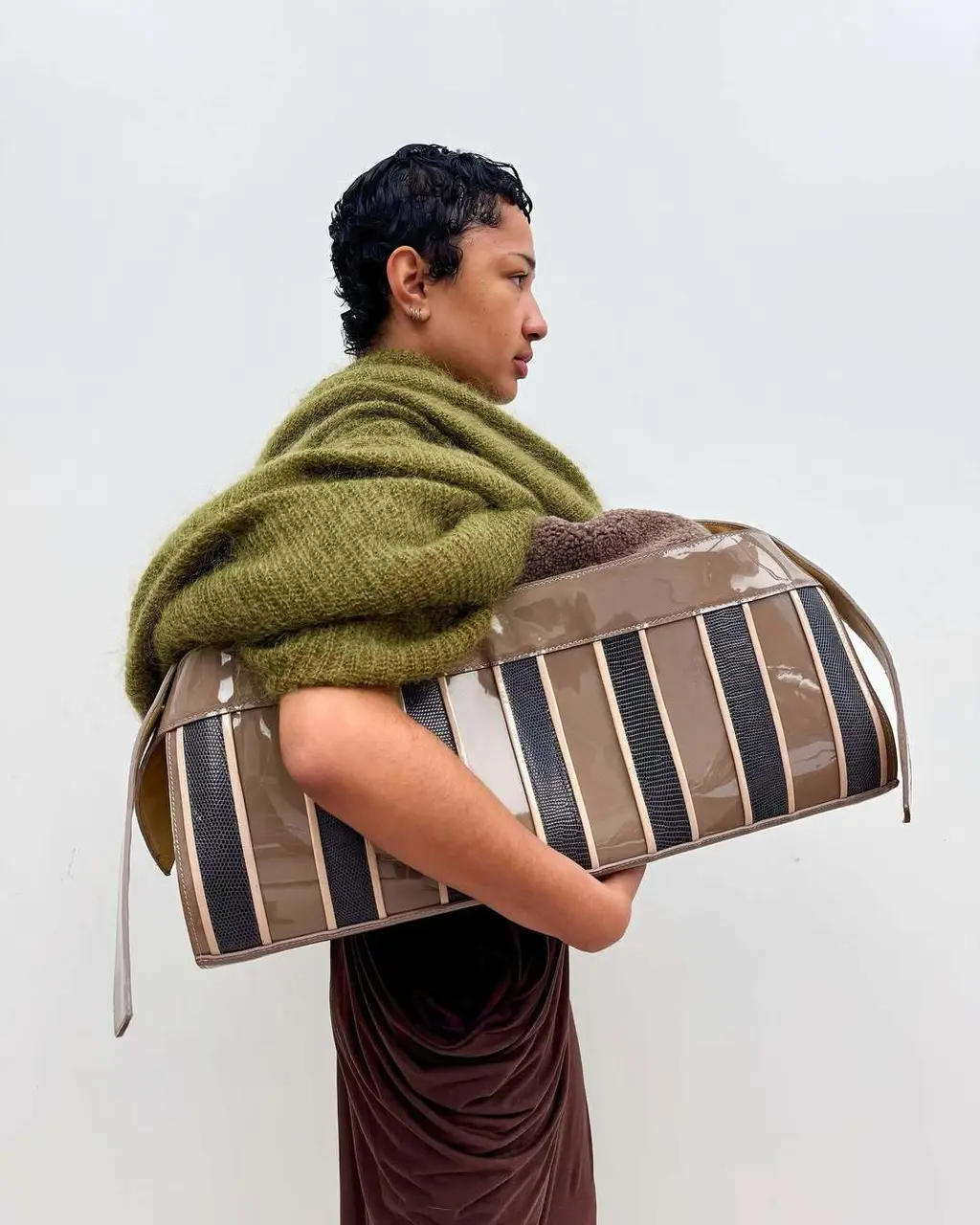
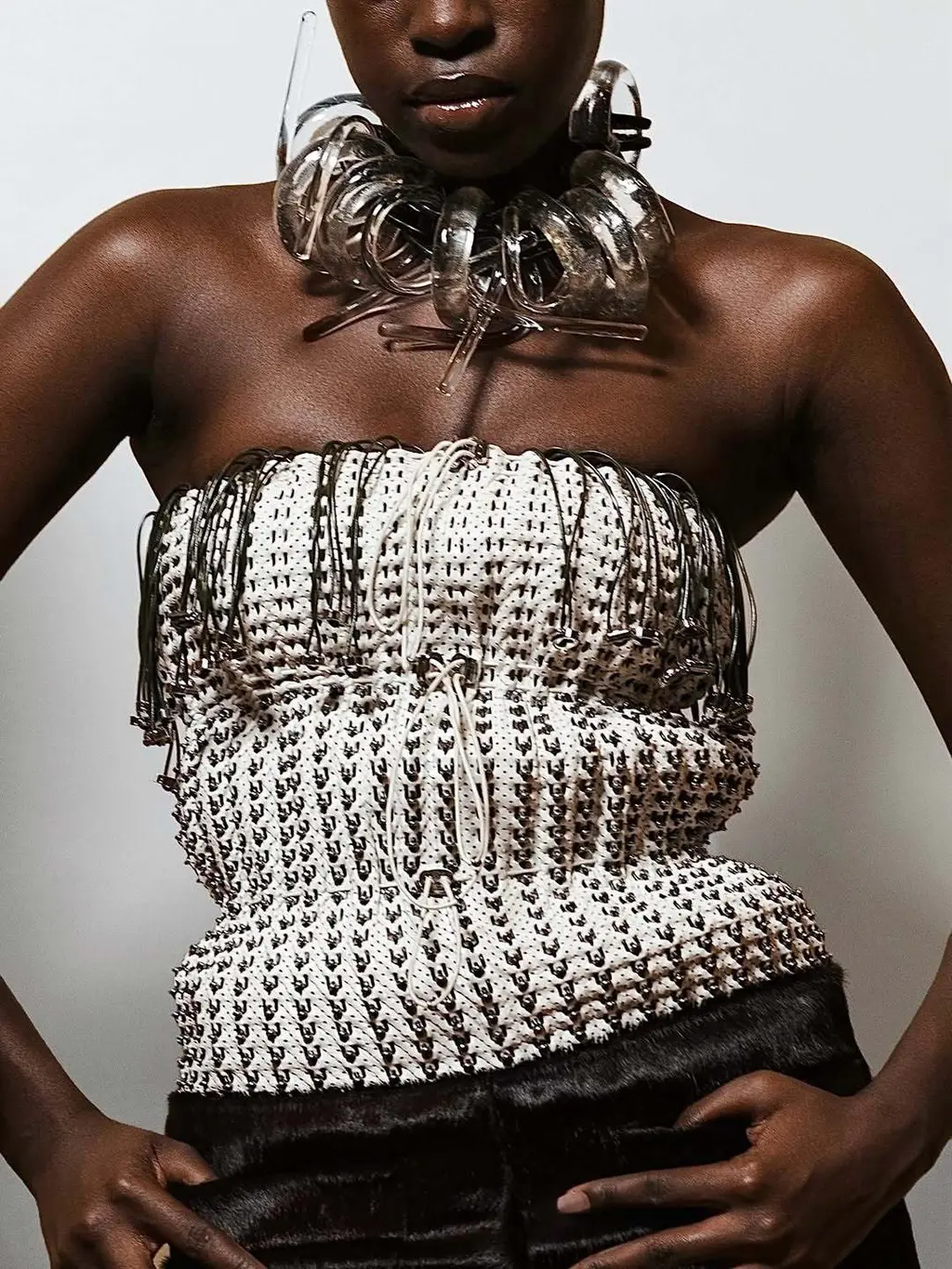
What was the inspiration behind the collection?
The pieces question and explore the primary function of textiles: to protect the body. The leather pieces are crafted with an element of fragility, while the draped pieces are born from hardware and transform into armour.
Do you have a muse?
Björk’s music, particularly her style from the late 1990s, was a huge inspiration for this collection.
Tell me about the process of creating the perforated lamb leather bustier and the metal bead/leather cord necklace.
I am a leather collector (or hoarder). While searching through my stock of materials for inspiration, I was already working on a piece for the collection that involved leather cords, so I wanted to create a version of that, but entirely from leather. I experimented with various leathers, including thin perforated suede and thicker varieties with larger holes. I also tried perforated fur and shearling.
Kapwani Kiwanga’s 2018 work Soft Measures inspired your 3D bag. What did you like about it?
I first saw her work from this series at an exhibition at Centre de Création Contemporaine Olivier Debré in Tours, my hometown, and was immediately drawn to it. From the overstained stripes to the draped cloth and the large granite block, I loved everything about it, both visually and graphically. The composition is stunning, and the use of different textures is incredibly inspiring.
Lyrone Journo
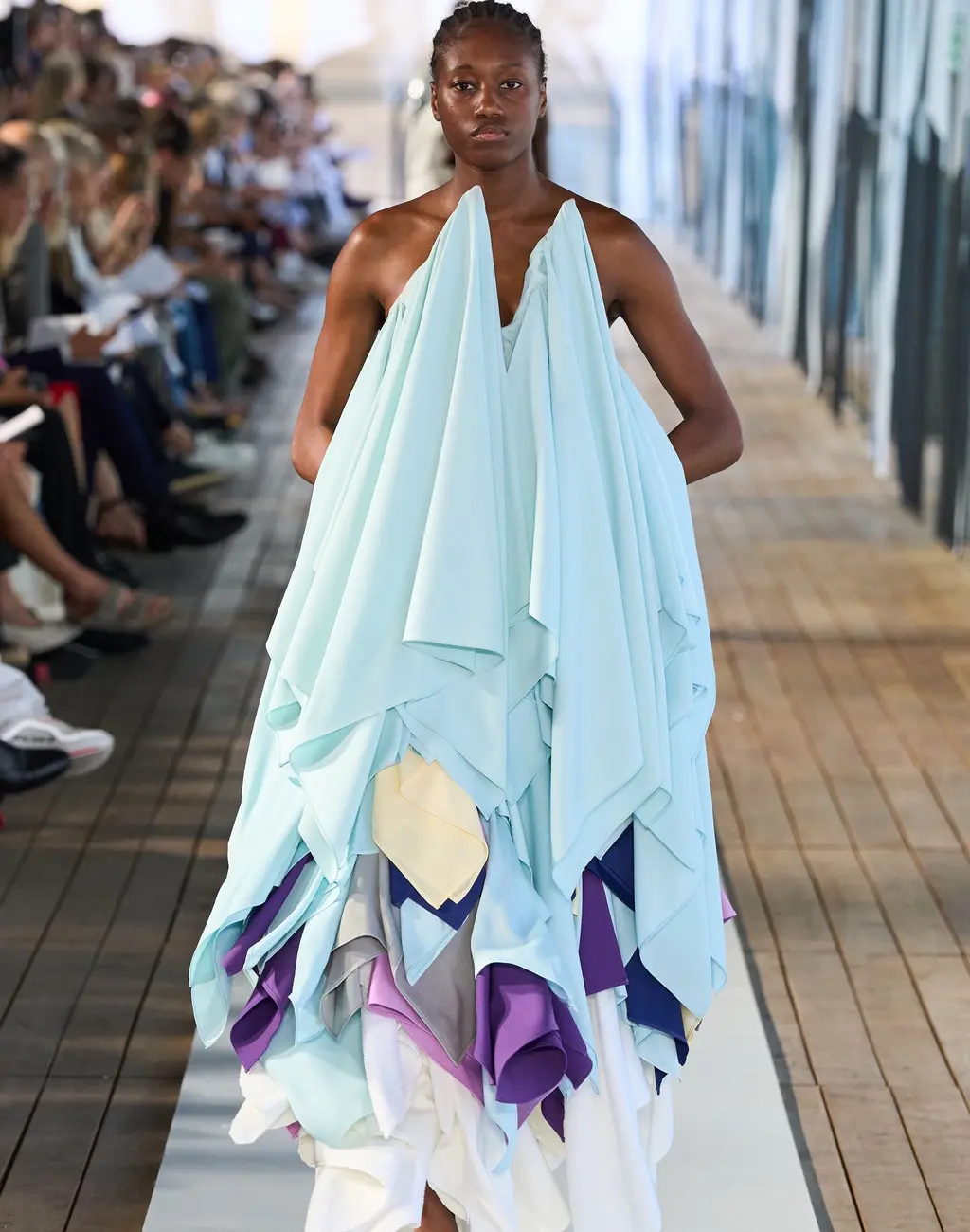
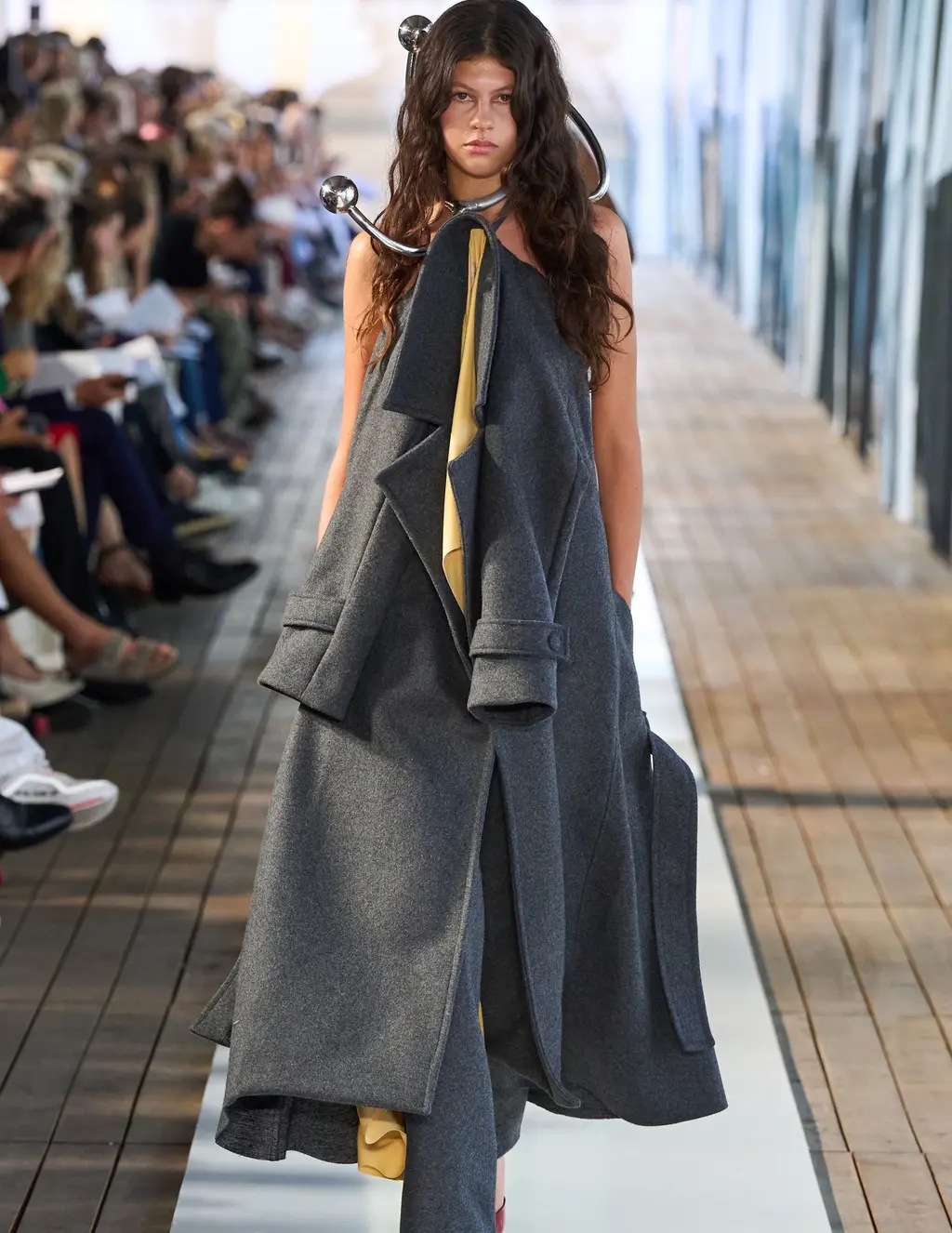
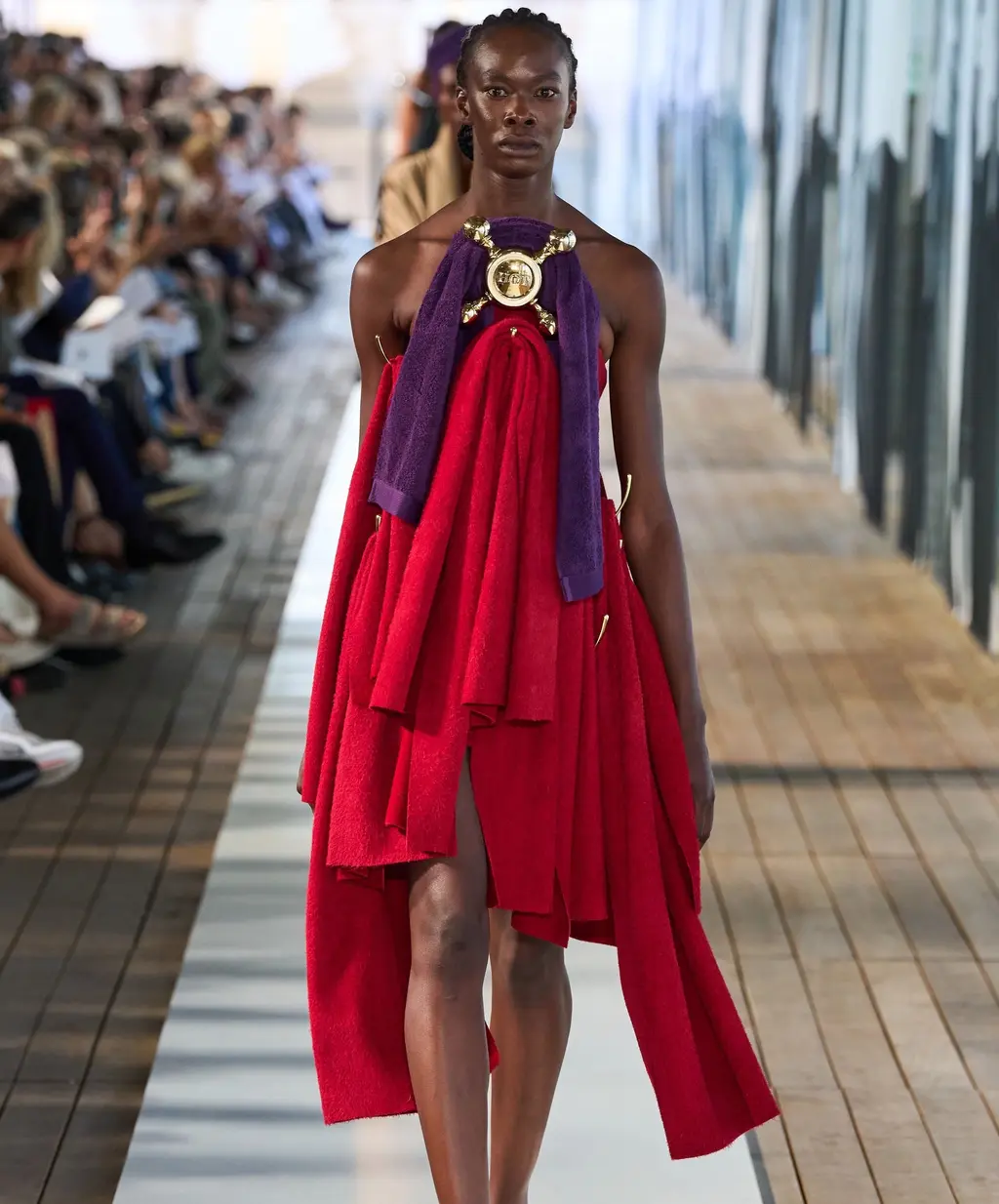
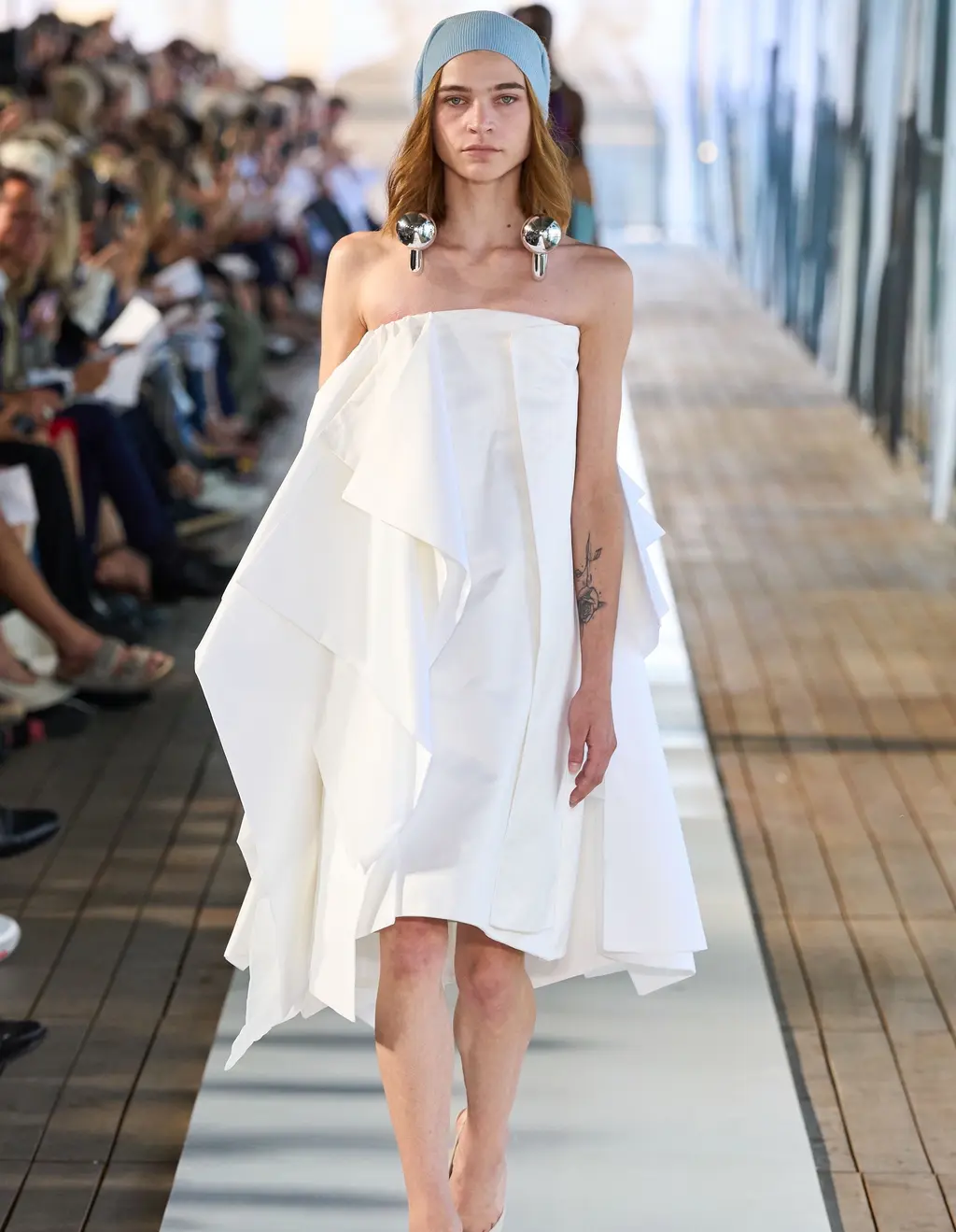
What was the inspiration behind the collection?
This collection questions our perception of things that seem banal to everyone else, but to me can be translated in other ways: a stack of books with pops of colour, the tightening of a parasol, the draping of a towel wrapped around the body. Everything becomes, in a way, more precious.
How did you come up with the idea for the corset dress and the leather pleated belt?
For the leather pleated belt, I wanted something on the edge of being an object, something that we don’t quite understand but that can be wearable. There’s something sculptural and abstract about this accumulation of really different leathers inspired by stacks of books on a shelf.
Why do the models wear 3D printed jewellery?
It was a playful way of rethinking what a piece of jewellery can be – a coat rack is now a necklace. I had the chance to collaborate with [Jean Brunet’s] Jean Atelier. He kindly – and surprisingly – responded to my DM. I really admire Jean’s craft and he guided me along with the help of his students from École Boulle art school [in Paris].
If you could have one person wear a look, who would it be and what look would it be?
Immediately, thinking of my childhood icons, Miley Cyrus or Zendaya. I’m a Disney kid! They made me keep dreaming. I played around with everything my house had to offer, trying to replicate their outfits. It was me expressing my creativity in an environment where I couldn’t necessarily [do that].
Keep tabs on the designers setting Parisian runways ablaze here: Tidjane Tall, Candice Morin, Amandine Leost, Antoine Lledo and Lyrone Journo.




















